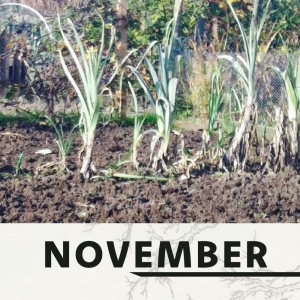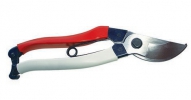
Winter is approaching and the work in the vegetable garden continues to dwindle off. Although there are vegetables that are good with frost, like kale and leek, many plants will die at the first frost. November is a good month to clean this kind of garden waste so the vegetable garden is cleaned in Winter. The plant leavings can be placed on the compost heap, preferably in small pieces so the plant can decompose faster. The compost can be used next season to fertilize the soil.
Like October, garlic can also be planted in November. The sprouts can be planted in bulk and will benefit from a cold period. Also, hardy beans can be planted. By sowing the beans now, they get a head start come Spring. This makes it possible to harvest the beans next year relatively early in the season.
Planting the beans is a matter of pushing the large seeds a few centimeters in the ground and covering them with soil. Look out for a sheltered place as it would be a shame to freeze the beans, although picking a hardy breed of beans helps. Frost damage can also be prevented by covering the soil with a layer of fleece. This keeps the soil warmer and decreases the chances of the plants freezing.
If you have artichokes in your vegetable garden, you should also protect these plants from the frost. The plants can be packed with straw, cut off the largest leaves of the artichoke plant and tie them together with a firm rope. Then, lay at least 20 centimeters of straw around the plants. This will prevent the roots from freezing and help the plant sprout easily in the Spring.
Fortunately, there is a lot to harvest in November! After the first frost, the cabbage is tastiest and the brussels sprouts are ready to hit the pan! Leeks will follow quickly, so prepare your delicious stew and cream soup recipes! In the case of kale, leaves should be cut off one by one. It is best to harvest just what you need, sprouts stay the best on the plant, rather than getting old in the fridge. Harvesting leeks is a breeze, simply pull up the leek with one hand and pop a garden rake under the plant’s roots. The leek will be easily released. After the outer leaves and roots have been released, the leek can immediately become your next yummiest winter meal! Enjoy!


